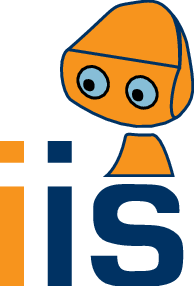User Tools
Site Tools
research:visual-learning
Differences
This shows you the differences between two versions of the page.
| Both sides previous revision Previous revision Next revision | Previous revision | ||
|
research:visual-learning [2012/02/15 22:39] c703101 [Reinforcement Learning on Visual Perception] |
— (current) | ||
|---|---|---|---|
| Line 1: | Line 1: | ||
| - | ===== Visual Learning ===== | ||
| - | |||
| - | A core interest lies in visual perception as part of closed-loop interactive tasks, and in particular, on systems that improve their performance with experience. Examples of our work include reinforcement learning within perception-action loops, image classification that drives machine learning to the extreme, and [[research:visuomotor-learning|visuomotor learning]] for various purposes including object detection, recognition and manipulation. | ||
| - | |||
| - | ==== Reinforcement Learning on Visual Perception ==== | ||
| - | |||
| - | {{ :research:rlvc-tree.gif?200|Animated decision tree}}Using learning approaches on visual input is a challenge because of the high dimensionality of the raw pixel data. In this work, we bring introduce concepts from appearance-based computer vision to reinforcement learning. Our RLVC algorithm ([[https://iis.uibk.ac.at/publications#Jodogne-2007-JAIR|Jodogne & Piater, 2007]]) initially treats the visual input space as a single, perceptually aliased state, which is then iteratively split on local visual features, forming a decision tree. In this way, perceptual learning and policy learning are interleaved, and the system learns to focus its attention on relevant visual features. | ||
| - | |||
| - | |||
| - | {{:research:joint-space.png?150 |Joint space}}Our RLJC algorithm ([[https://iis.uibk.ac.at//publications#Jodogne-2006-ECML-222|Jodogne & Piater, 2006]]), extends this idea to the combined perception-action space. This constitutes a promising new approach to the age-old problem of applying reinforcement learning to high-dimensional and/or continuous action spaces. | ||
| - | |||
| - | |||
| - | ==== Image Classification using Extra-Trees and Random Patches ==== | ||
| - | |||
| - | |||
| - | Image classification remains a difficult problem in general, and the best results on specific problems are usually obtained using specifically tailored methods. | ||
| - | |||
| - | We came up with a generic method that turns this principle upside-down and nevertheless achieves highly competitive results on several, very different data sets ([[https://iis.uibk.ac.at//publications#Maree-2005-CVPR|Marée, et.al. 2005]]). It is based on three straightforward insights: | ||
| - | |||
| - | * **Randomness** to keep classifier bias down, | ||
| - | * **Local patches** to increase robustness to partial occlusions and global phenomena such as viewpoint changes, | ||
| - | * **Normalization** to achieve invariance to various transformations. | ||
| - | |||
| - | The key contribution was probably the demonstration of how far randomization can take us: Local patches are extracted at random, rotational invariance is obtained by randomly rotating the training patches, and classification is done using Extremely Randomized Trees. | ||
| - | |||
research/visual-learning.1329341986.txt.gz · Last modified: 2018/09/03 14:57 (external edit)

